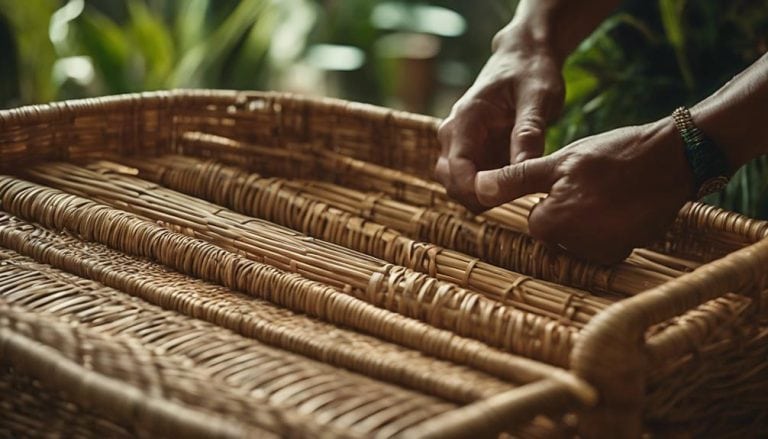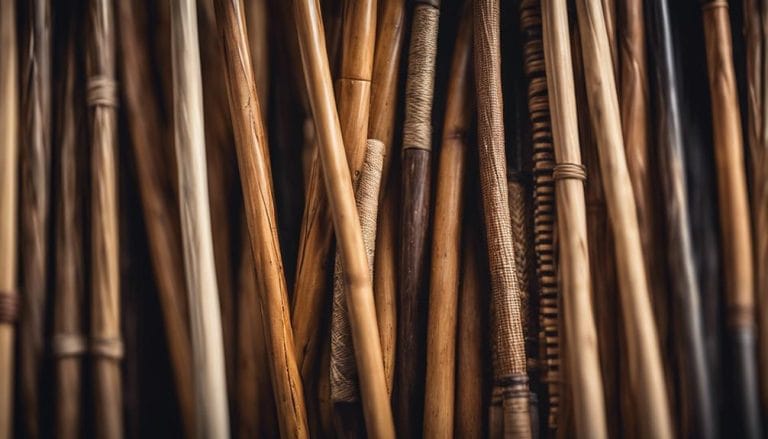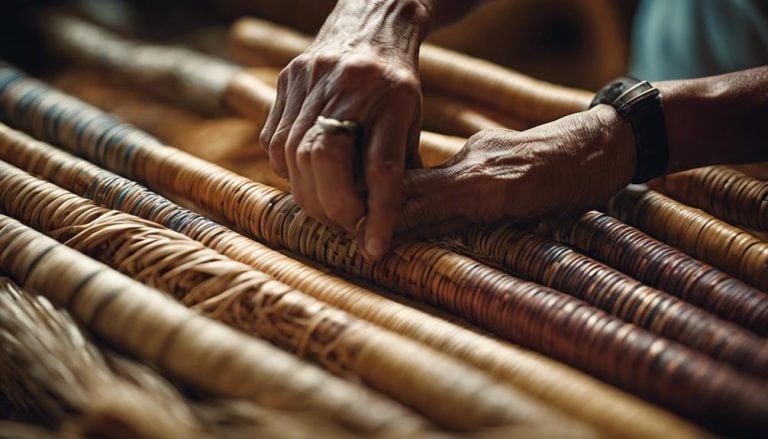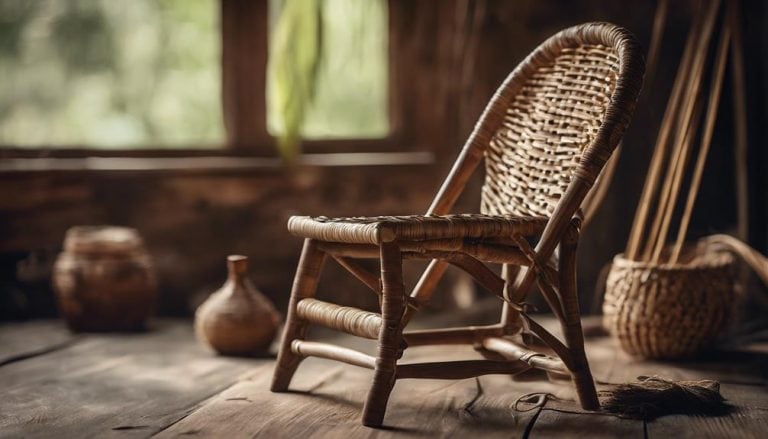Rattan Cane for Weaving: Beginner's Guide
When I first touched a rattan cane, I was overwhelmed by its flexibility and durability, making it perfect for weaving. As a professional in this craft, I’ve learned that selecting the right cane size and mastering basic weaving techniques are crucial steps for beginners.
My journey from preparing the rattan to completing my first project was filled with trial and error, but it led me to discover invaluable tips and tricks. If you’re curious about navigating these initial challenges and achieving beautiful results with your projects, I believe my insights could pave the way for your success.
In a beginner’s guide to using a rattan cane for weaving, start by soaking the cane to make it pliable before weaving it into intricate patterns. Experiment with different weaving techniques to create unique and durable pieces with rattan cane.
Key Takeaways
- Soak rattan for 24-48 hours to enhance flexibility for weaving.
- Essential tools include a sharp knife, peg, pliers, and an awl for precise work.
- Master basic weaving techniques like over-under, twining, and plaiting for strong creations.
- Protect finished rattan pieces from elements and maintain them with light misting and protective coatings.
Preparing Rattan for Weaving
Before weaving with a rattan cane, it’s crucial to properly prepare it by soaking it in water for 24-48 hours to ensure it’s sufficiently flexible for the task ahead. Selecting the right rattan cane is foundational to this craft. I’ve learned through my own experiences that not all rattan is created equal. The diameter, texture, and overall quality can significantly impact your project. I always take my time choosing, making sure each piece feels sturdy yet pliable enough to bend without snapping.
Once soaked, I gently test each piece’s flexibility. This step is more than a simple precaution; it’s a moment of connection with the material and understanding its limits and possibilities. After patting the rattan dry, I keep a spray bottle to mist it during weaving, ensuring it doesn’t dry out and become brittle.
Weaving pattern experimentation begins here with the prepared cane. I’ve found that starting with simpler patterns and gradually moving to more complex designs helps in understanding the behavior of rattan. Each project is a journey, with the prepared, flexible cane as my companion guiding me through the intricate dance of weaving.
Essential Weaving Tools
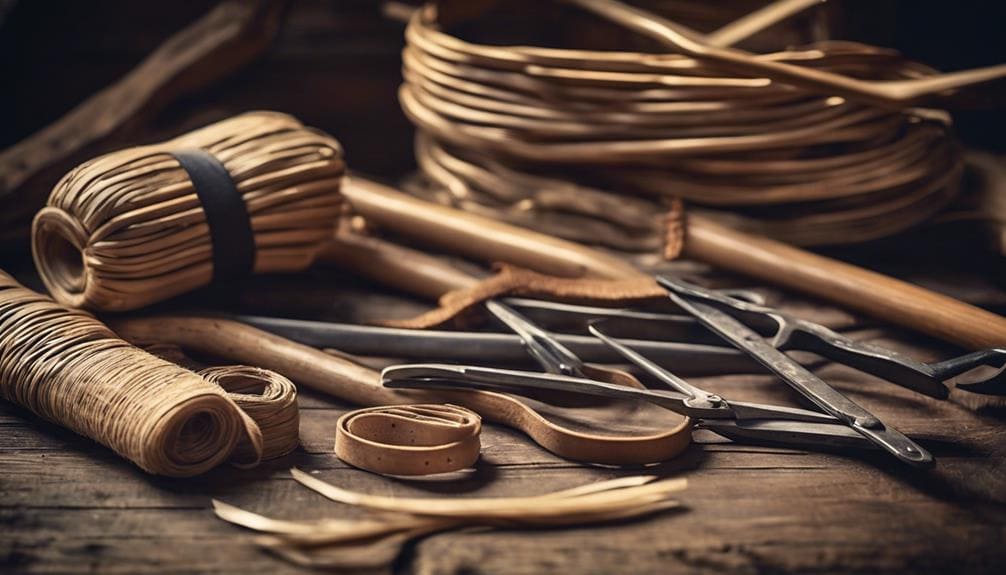
After properly preparing the rattan, let’s focus on the essential tools you’ll need to weave it effectively. As someone who’s spent countless hours weaving, I’ve come to appreciate the importance of not just having the right tools but also understanding their maintenance and customization for optimal weaving efficiency and safety.
Here’s a brief rundown of tools that I’ve found indispensable:
- A sharp knife: For cutting and shaping the cane. Ensuring it’s always sharp is key to tool maintenance and weaving safety.
- Peg is vital for holding the cane in place: This simple tool significantly boosts your weaving efficiency, allowing for a secure and even finish.
- Round-nosed pliers and an awl: The pliers for bending and manipulating the cane; and the awl for creating precise holes in the base material. Both tools can be customized to fit your grip and style, enhancing comfort during long weaving sessions.
Incorporating these tools in your weaving toolkit makes the process smoother and allows for a safer and more enjoyable crafting experience. Remember, the quality of your work is often reflected in the care you put into your tools and your mastery over them.
Basic Weaving Techniques
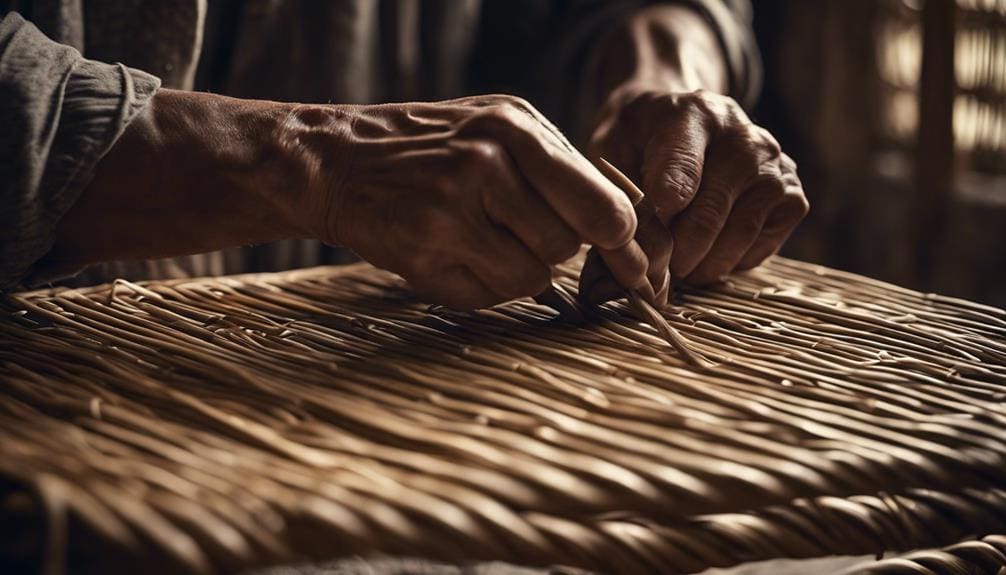
With a solid understanding of the essential tools for rattan cane weaving, let’s dive into the basic techniques that form the foundation of this intricate craft. Rattan cane weaving starts with mastering the over-under technique, a simple yet versatile pattern essential for creating strong and beautiful pieces. By interlacing long strands of rattan cane, you can see your work take shape, whether a basket, a piece of furniture, or a decorative item.
Twining, plaiting, and coiling are next in line, each offering your creations a unique texture and strength. I’ve found that understanding the tension and spacing of your weave is crucial. It’s the difference between a durable piece and one that’s not. Starting with these basic techniques, you’re laying the groundwork for more advanced patterns and creative projects.
Historical techniques serve as both a guide and artistic inspiration. They connect us to the past and fuel our creativity, pushing us to explore beyond the basics. As you grow more comfortable, you’ll experiment with combinations that lead to truly unique pieces. Remember, every master weaver started here with these foundational skills, building towards those complex designs that now inspire your journey.
Crafting Your First Project

Now that you’ve grasped the basic weaving techniques, starting with a small project such as a coaster or trivet will solidify your skills in rattan cane weaving. Beginning with something manageable offers a sandbox for experimentation and learning without overwhelming you.
I’ve found that the key to success lies in a few core practices:
- Choosing patterns wisely: a simple over-under pattern is easy to handle and deeply satisfying as the shape comes together under your fingers.
- Maintaining even tension in your weaving ensures the finished product is consistent and sturdy. This was a game-changer for me, as it transformed my projects from amateurish to professional-looking.
- Experimenting with different cane sizes and weaving methods. This exploration helped me understand how each decision affects the aesthetic and structural integrity of the final piece.
Troubleshooting mistakes along the way is part of the journey. Don’t be discouraged by them. Instead, view each error as a learning opportunity. I’ve leaned heavily on beginner-friendly tutorials and books, which were indispensable in guiding me through my initial projects.
Caring for Rattan Creations
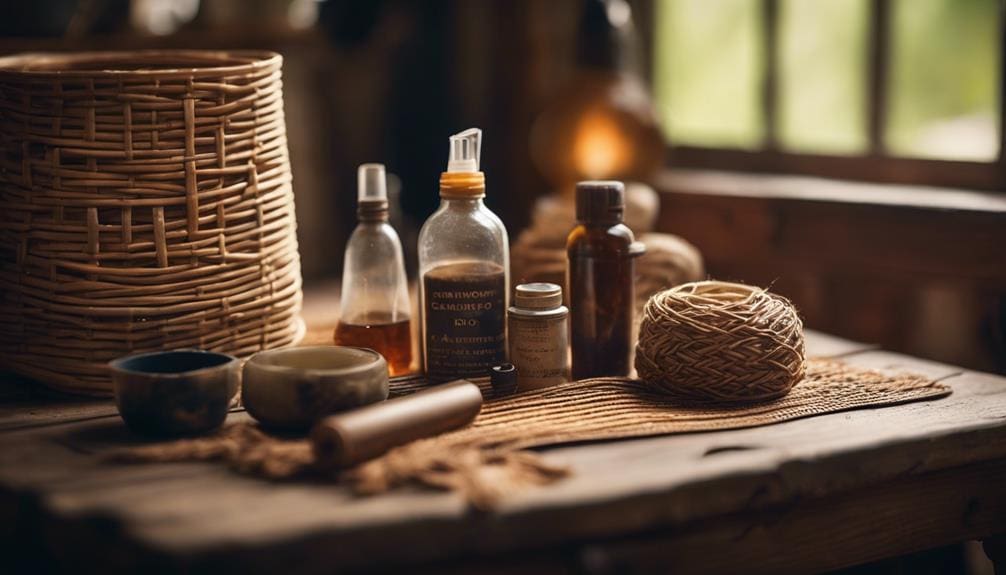
After mastering your first project, it is crucial to learn how to care for your rattan creations to ensure they last and retain their beauty. Through my journey, I’ve discovered that caring effectively for rattan isn’t just about preservation; it’s about deepening the bond between you and your craft.
Here’s a straightforward guide I swear by:
| Care Aspect | Why It’s Important | How to Do It |
|---|---|---|
| Protection from Elements | Prevents damage and fading | Keep away from direct sunlight and extreme heat |
| Maintenance of Weaves | Ensures longevity and structural integrity | Mist lightly with water to tighten weaves |
| Application of Coatings | Enhances appearance, adds protection | Apply a thinned coat of polyurethane or shellac |
Frequently Asked Questions
How Long to Soak Rattan Before Weaving?
Soaking rattan for about 30 minutes in warm water works best. Ensure it’s fully submerged in a large container; this method prevents breakage, making weaving smoother. Adjust time for thicker pieces or drier cane.
How Do You Prepare Rattan for Weaving?
I soak my rattan in water for flexibility, then gently dry it off. For storage, I wrap it in a damp cloth and hang it up, ensuring it stays pliable for my weaving projects.
Is There a Difference Between Rattan and Cane?
Yes, there’s a difference between rattan and cane. Rattan’s sustainability appeals to me, while Cane’s versatility in weaving captivates me. Rattan is the whole plant; cane is just the outer skin, perfect for detailed projects.
Why Do You Soak Cane Webbing?
I soak my cane webbing to increase its flexibility and preserve its quality. This technique prevents it from drying out and cracking, ensuring my weaving remains smooth and durable. It’s a crucial step in my process.
Conclusion
Stepping into the world of rattan weaving, I’ve journeyed from the bewildering maze of selecting cane sizes to mastering the delicate dance of weaving techniques. Like an artist with a palette, I’ve learned to wield tools with finesse, breathing life into my creations. My first project, a testament to perseverance, echoes the timeless craft of generations past. In caring for these woven treasures, I’m reminded of the enduring beauty of rattan, a whisper of tradition in our fast-paced world.



